Bone, Trauma and the Water Element
Bone is living tissue, and is governed by the Water Element in Five Element acupuncture theory. Water represents the primal instinct for survival. Part I of this article explained why the Water Element is so important for a healthy response to threat, and for healing trauma. The Water Element has a role in both initiating the acute stress response (ASR), and modulating our ability to return to a state of safety. Recently, research on the physiology of bone shows that bone does indeed have an important role in initiating ASR, supporting the Five Element understanding of bone as a “Water Element” tissue.
How Bone Responds to Stress
We tend to think of bone as inert, and the skeleton simply a framework that supports the rest of the body. In fact, bone is constantly being remodeled in response to mechanical stress, as living bone cells are formed and later resorbed by the body. Bone marrow plays a key role in the development of cells of the immune system, as well as the formation of red blood cells. Bones communicate with tissues and organs throughout the body via the bone-produced hormone osteocalcin.
Recent research has shown that osteocalcin, not adrenaline, initiates ASR. As soon as the brain recognizes danger, the skeleton floods the body with osteocalcin, turning on the fight-or-flight response. Heart rate goes up, breathing becomes rapid, and glucose is released to fuel the body for action.
Bone, via osteocalcin, has other widespread influences on metabolism and development. Research shows that osteocalcin plays a role in brain development, memory and cognition. Osteocalcin stimulates the release of insulin, so it has an important role in blood sugar metabolism. And, it influences the production of testosterone, so it plays a role in male sexuality and libido.
All of this makes sense if we think of the skeleton as something that developed to allow the living organism to escape from danger. The skull protects the brain from trauma. The skeleton allows us to run away from predators or attackers. Even the bones in the ear allow us to hear at a distance and alert us to approaching threat.
Bone, Brain and the Water Element
Not only does the Water Element govern bone and the skeleton, the brain is also involved. The ancient Chinese regarded the brain as “the sea of marrow” and therefore related to bone and the Water Element. Consider the parts of the brain and nervous system that are responsible for instinct, rather than conscious thought. The “reptile brain,” the amygdala, is closely associated with emotional responses of fear, anxiety and aggression, and is activated in situations of danger. The brain stem and the spinal cord control the deepest levels of the autonomic nervous system, running the most basic functions that keep us alive.
One of the key meridians associated with the Water Element (the Bladder meridian) runs along the spine. When we stimulate it with acupuncture, we are tapping into the autonomic nervous system and the deepest levels below consciousness.
Ears, Trauma and the Water Element
The ears also contain bones, and the sense of hearing is therefore associated with the Water Element and our ability to detect danger. Hearing allows us to sense things that are far away, and monitor approaching threat.
The middle ear contains three bones. The contraction and relaxation of the muscles of the middle ear shifts our neural tone, which is what allows us to focus on human voice and extract it from background sounds. When we are feeling safe, we focus on listening to social conversation. If we are walking in the dark, our attention may shift away from conversation and towards the background environment, allowing us to be alert to danger.
Auditory hypersensitivity is common in post-traumatic stress disorder, autism, depression and some other mental disorders. People with auditory hypersensitivity are bothered by background noise, and often don’t like to be in public places. They may have difficulty listening to conversation because they can’t extract the human voice. In terms of the Water Element, they are tuned to a level that allows them to sense danger and respond to threat, and are unable to shift away from it.
Healing Trauma and the Water Element
The Water Element links together many of the diverse body-mind responses to stressful and traumatic experiences, helping us to understand the common pattern. Balancing and treat the Water Element with Five Element acupuncture helps to give the person a stronger capacity to self-regulate around fear, threat and the need for safety and protection. A healthy Water Element allows us to navigate between arousal in response to threat, and return to rest and safety. Every aspect of body and mind benefits.
References
- Alaine D. Duncan. The Tao of Trauma. North Atlantic Books, 2019.
- Claude Larre and Elisabeth Rochat de la Vallee. The Kidneys. Monkey Press, 1989.
- Stephen W. Porges. The Pocket Guide to Polyvagal Theory: the Transformative Power of Feeling Safe. W.W. Norton and Company. 2017.
- J.R Worsley. Classical Five Element Acupuncture, Vol. III: The Five Element and the Officials. 1998.




